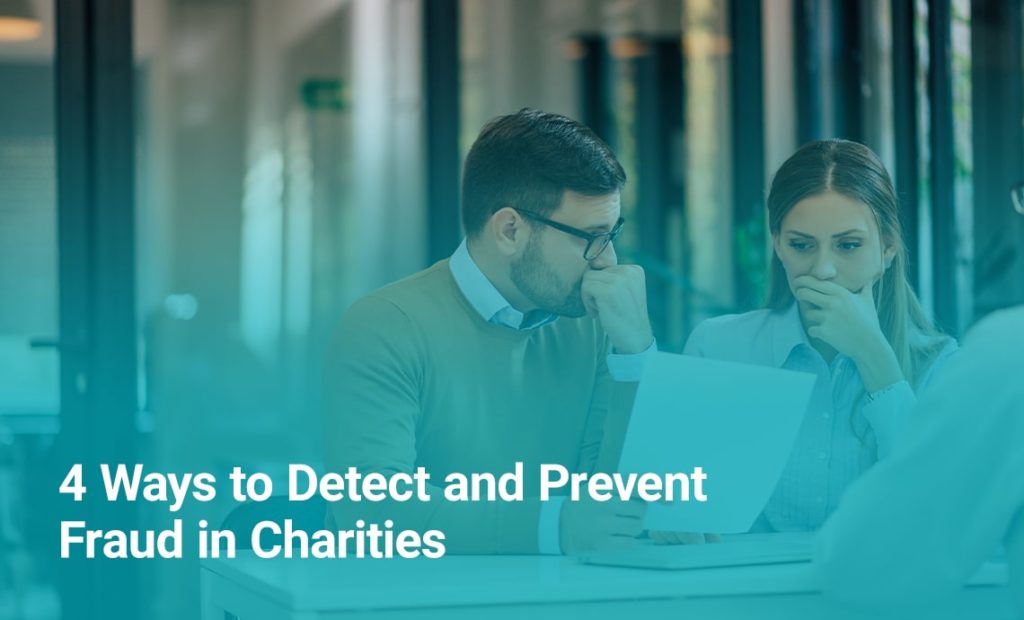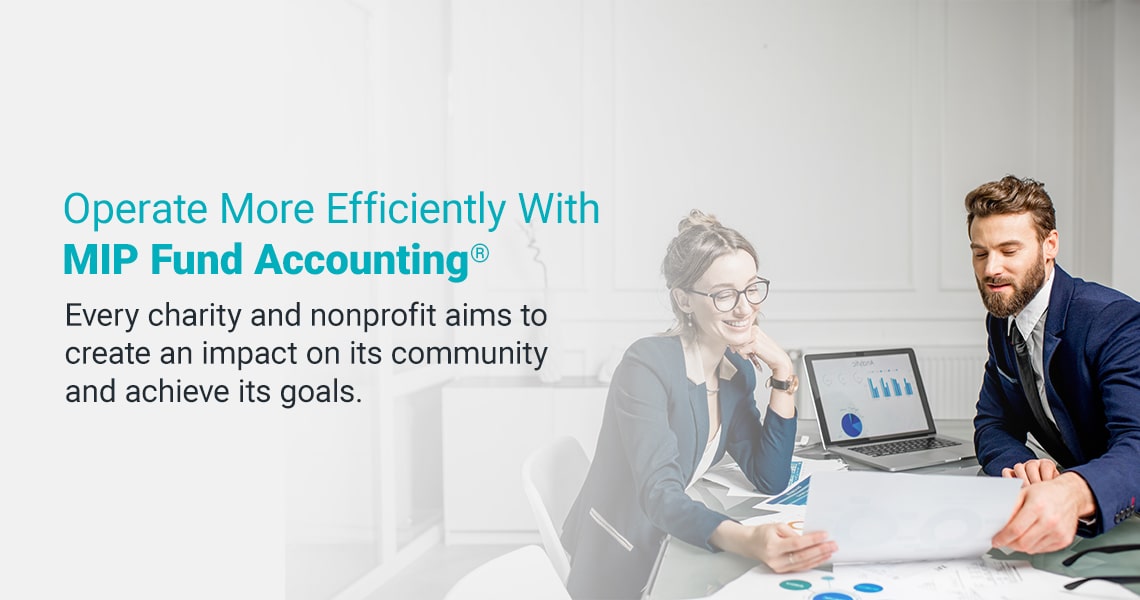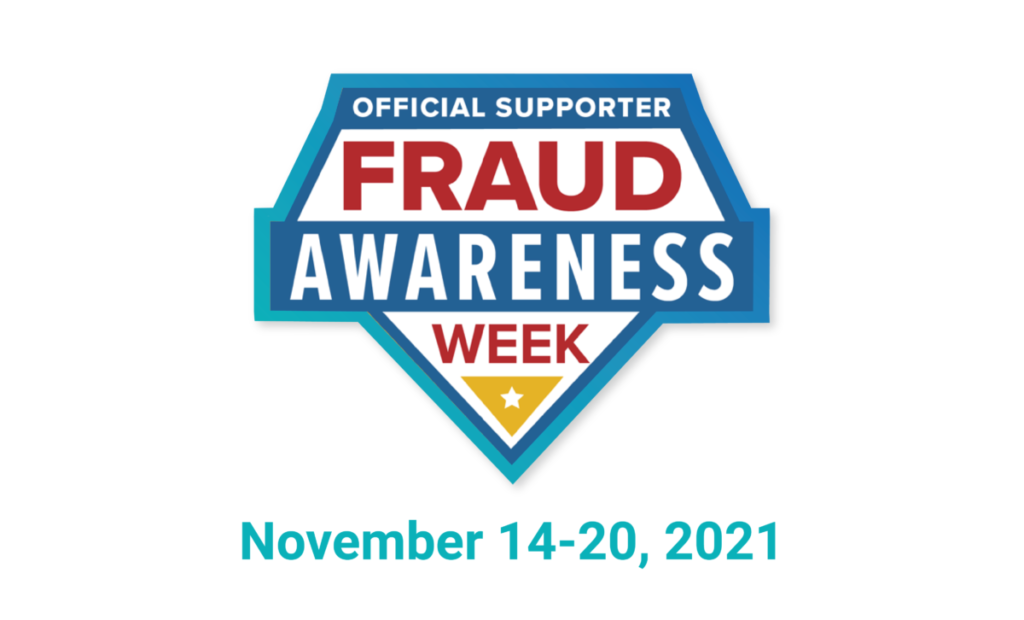Charities and nonprofit organizations are beneficial to society in many ways. Promoting generosity and inspiring people to volunteer their time to help worthy causes are just some of the elements that can bring a community together. However, it’s essential to be proactive about detecting and preventing fraud in nonprofit organizations.
Many people don’t think of charities as being vulnerable to fraud or embezzlement, but it might be more common than you think. Most fraud is only caught by accident or via tips from other employees. Internal audits catch only 25% of fraud.
Some aspects of fraud or corruption in a charity or organization can emerge in the form of:
- Embezzlement.
- Bribes.
- Rewards.
- Extortion.
- Conflicts of interest.
It’s crucial to ensure that these types of fraud and theft do not go undetected in your charity or nonprofit. Here are some ways you can identify and prevent fraudulent activities.
1. Hire the Right People
The employees, volunteers and additional staff that make up your charity or nonprofit organization should be dependable and responsible. It can be difficult to take action against fraud if your organization has a lack of resources, such as trustworthy people in supervisory positions. Managers should be aware that three aspects usually drive a volunteer or employee to commit fraud, a phenomenon known as the Fraud Risk Triangle:
- Pressure: Extra stress put on employees to meet unrealistic demands and performance standards may result in motivation to commit fraud. Personal problems may also contribute to this pressure.
- Opportunity: A lack of internal controls, such as proper monitoring and oversight, might provide an incentive for employees to steal or commit fraud.
- Rationalization: Someone who can justify the personal rewards for fraud over the possibility of getting caught may be likely to commit fraud. These justifications can relate to job dissatisfaction or entitlement.
These risk factors can be observed in employee or volunteer behaviors and conversations. An individual’s capability to commit fraud should also be considered. Those who are likely to be dishonest or have excessive knowledge of the charity system may be more capable of fraud than others.
To provide extra protection for your charity against fraud, it’s reasonable to ask for references and implement accurate, efficient background checks for all employees. Most fraud is committed by trusted employees or volunteers that you may never expect. Many people who commit fraud may also feel motivated to continue doing so due to a lack of consequences or detection.
Providing clear rules and guidelines for ethical behavior in your charity or nonprofit organization is essential to set the tone for all employees or volunteers. Explicitly communicate that dishonest or unethical behavior will not be tolerated regardless of how it affects the organization. Managers and directors should also publicly promote the stipulation that all employees may face the same consequences no matter their position within the charity.
2. Encourage Additional Oversight
Lack of control or supervision may increase the likelihood of fraud. Some of the most common management shortfalls include:
- Inefficient management: An unqualified board of executives or managers may not monitor functions of the nonprofit accurately.
- Pressure and responsibility: Executives taking on excessive workloads may become burnt out and be less likely to catch fraud. They may even commit it themselves.
- A shortage of employee development programs: Fewer incentives to work efficiently, such as promotional opportunities, for undertrained and unhappy employees can increase the possibility of fraud.
- Hasty approval of executive decisions: Taking the time to consider all possible questions and options can help to reduce rushed decisions that may lead to fraud.
It’s important to remember that treating your employees with respect and appreciation may reduce their motivation or incentive to commit fraud. If your employees feel ignored or mistreated, they may be more likely to engage in fraudulent activities. Employees or volunteers may also be less willing to report fraud committed by another staff member if they feel undervalued.
You can improve transparency and accountability within your organization with active engagement from managers, directors, and supervisors. Proper leadership and oversight may boost effective collaboration between all members of a charity and inspire a feeling of social support and teamwork.
3. Implement Checks and Balances
In any business, charity or organization, checks and balances are key to combatting fraud and maintaining control. This concept is also known as internal controls, which are policies and regulations that prevent misuse and misappropriation of assets.
Staying vigilant of all finances and expenses for your charity or organization can help you predict and detect ongoing fraud or embezzlement. The organization and interpretation of financial statements is especially important to determine if your charity is experiencing fraud. Some examples of falsifying financial documents in nonprofit organizations can include:
- Overstatement of revenue.
- Inappropriate asset valuation.
- Absence of disclosure.
Ensuring that no one person has complete control over your charity’s funds and financial access by separating all necessary tasks is a great way to execute nonprofit fraud prevention. You can implement this proactive method of fraud detection in several ways:
- Delegate separate functions to different employees.
- Require employees and volunteers to submit all receipts.
- Monitor financial activity periodically.
- Compare revenue, donations, and expenses.
- Require an explanation of any significant changes in expenses.
- Examine bank statements and canceled checks.
- Separate those who handle receipts and deposits from those who are responsible for record-keeping.
- Limit employee access to funds.
To stay on top of internal controls in your charity, it’s critical to generate proper documentation procedures and openly communicate about who is responsible for certain tasks.
4. Use an Automated System
Consider an automated system for your nonprofit financial needs and accounting processes. Implementing anti-fraud detection can control your charity’s exposure to loss. A lack of adequate internal controls is one of the most common elements that allow fraud to occur in an organization.
Fraud prevention software with advanced security will give you peace of mind that you’re taking necessary, actionable steps to protect your organization. Rely on updated, accurate technology to help reduce the occurrence of both human error or intentional theft or fraud.
Automation platforms can provide many other benefits to a charity or nonprofit organization by:
- Assisting with donor management to exceed expectations.
- Tracking donations and funding requirements.
- Developing tailored campaigns to meet your charity’s goals.
- Facilitating online and event fundraising.
- Introducing mobile bidding for convenience and exposure.
- Improving personalized engagement with donors.
Implementing a fraud detection and prevention software system that can handle all of these tasks may leave you with more time to expand the missions and goals of your charity or nonprofit. It can be comforting to know that the information in your system is being analyzed by a trustworthy source, reducing your need to micromanage employees and volunteers.
Operate More Efficiently With MIP Fund Accounting®
Every charity and nonprofit aims to create an impact on its community and achieve its goals. With MIP Fund Accounting® nonprofit software, we want to help you fulfill your needs and accomplish your mission by providing integrated solutions for fund accounting, donor management, fundraising, and events.
Our secure, comprehensive software solution works to prevent fraud. With built-in and configurable dashboards and reports, you can access all of your charity’s data and ensure compliance and accuracy. Contact us online today or call 800-811-0961 to see how we can contribute to your ambitions.






